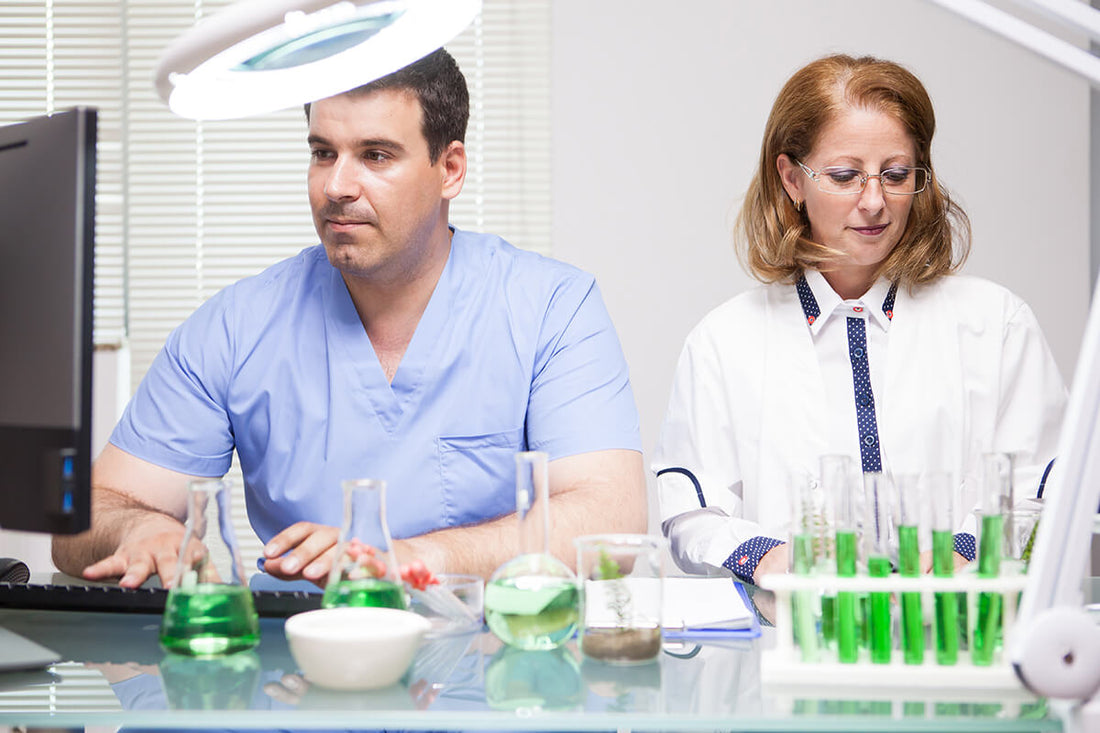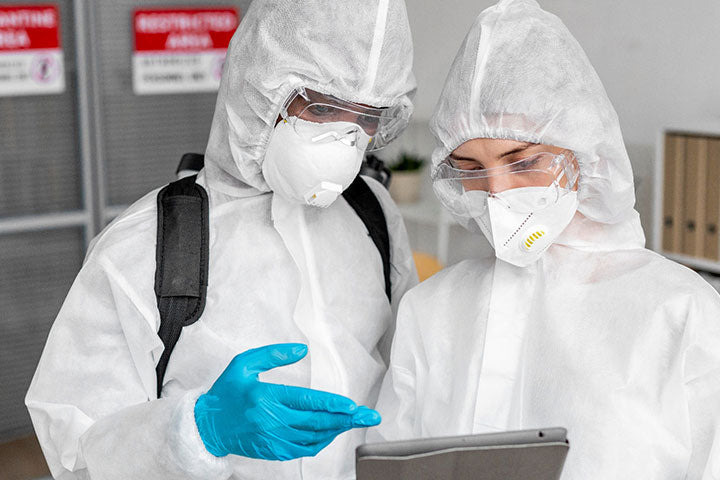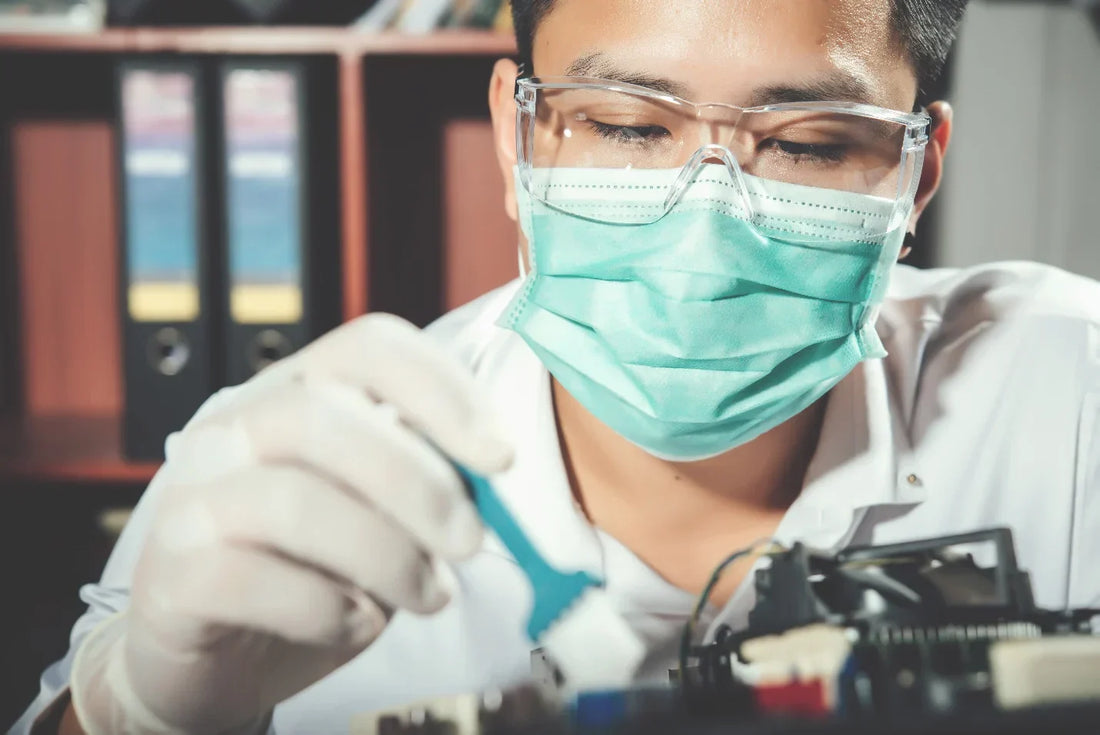Is Your Biosafety Cabinet Calibrated? Certification Tips You Can't Ignore

Summary
Ignoring biosafety equipment certification is the fastest way to damage your company's reputation and endanger the lives of your employees. This article explores the importance of biosafety cabinet certification and key requirements for a successful certification.
Introduction
Biosafety Cabinet (BSC) certification is a process ensuring that your equipment is working according to certain specifications and provides accurate measurements. These measurements are then documented for easy verification.
As a scientist and lab manager, you must ensure that your equipment is always calibrated and keep documents of maintenance results. While regular calibration and maintenance can lead to increased downtime, the risks are more serious and potentially catastrophic.
At R&D Laboratory Equipment, we prioritize the safety of lab personnel, the environment, and the equipment itself. Our experts have come together to explain why calibration is essential and suggest key certification tips that you must follow.
What Is Biosafety Cabinet Certification?

Biosafety cabinet certification (BSC) tests your equipment for functional operation and integrity. Properly maintained and certified BSCs, when used in conjunction with good microbiological techniques, provide an effective containment system for the safe manipulation of low, moderate, and high microorganisms.
Why Is Calibration Critical for Biosafety Cabinets?
Calibration ensures that your biosafety cabinets are safe and their results can be trusted. Specific advantages of having your BSCs calibrated include:
1. Personnel Safety
If your biosafety cabinets are not working as intended or specified by safety standards and regulations, then laboratory workers are at risk of infection by dangerous microorganisms, putting their lives in jeopardy.
2. Environmental Safety
In addition to the risks to workers' safety, an uncalibrated or poorly maintained biosafety cabinet poses a severe and direct danger to the environment and the public. A faulty equipment can easily lead to a viral pandemic.
3. Reputational Damage
In the scientific community, a single error can have devastating consequences. If your facility is found to have endangered its personnel and the public by working on uncalibrated equipment, it could quickly develop a reputation for being unethical and a risky place to work.
4. Lost Work
If your lab work is determined to have been processed or passed through an uncertified BSC, it becomes contaminated and unusable for your purpose. The same is true for drugs, vaccines, or patent submissions that are demonstrated to have been under uncertified conditions. The work must, therefore, be redone after the equipment has been certified, resulting in a significant waste of time and resources.
5. Avoidance of Penalties
Under the NSF/ANSI 49 standard, regular equipment calibration is mandatory. The standard mandates that BSCs be certified at installation, annually, and after relocation or major maintenance to ensure proper containment and airflow performance.
Key Biosafety Cabinet Certification Requirements

The following are the key regulatory requirements for biosafety cabinet certification:
1. Airflow Performance Testing
This testing has three stages. The first is the inflow velocity test, which measures the inward airflow at the cabinet’s opening to ensure proper containment. The second is the downflow velocity test, which ensures uniform airflow inside the work zone for sample and personnel protection. The third is the airflow smoke pattern test, which uses visible smoke to confirm that there is no leakage in the equipment.
2. HEPA/ULPA Filter Integrity Testing
This test ensures that the HEPA/ULPA filters are not leaking and verifies proper sealing and installation.
3. Containment and Protection Tests
This test includes the site installation assessment, which verifies the proper equipment placement to avoid airflow disruptions. The test also ensures that the biosafety cabinet provides adequate protection to prevent product contamination.
4. Alarm & Control System Verification
This test verifies that all alarm systems are fully functional in case of airflow disruption.
5. UV Light Functionality
This test ensures that the UV lamp emits the correct voltage for decontamination and is placed at the proper places.
6. Documentation & Compliance Report
Certification results must be documented and stickers with the next due date placed on the equipment.
Common Challenges in Biological Safety Cabinet Certification
1. Airflow Issues
Consistent inflow and downflow are crucial for the proper functioning of your biosafety cabinet. A blocked filter can severely impact its containment and product protection capabilities.
2. HEPA Filters
Filter damage or leaks can occur due to wear, improper installation, or human error.
3. Improper Placement
Placing the equipment in locations where proper and consistent airflow is not guaranteed can cause operational failure.
4. Non-Compliance with Certification Standards
To be valid, biosafety cabinet certifications must comply with safety and regulatory standards, such as NSF/ANSI 49, EN 12469, and ISO 14644.
Tips for Choosing the Right Certification Provider

Selecting the right certification provider is crucial for ensuring compliance with safety standards and maintaining a controlled laboratory environment. Key factors to consider include:
1. Verify Accreditation and Compliance
Ensure the provider is accredited by a reputable regulatory authority such as NSF International, CDC, and the ISO.
2. Check Technician Qualifications
Ensure that the certification provider possesses the correct qualifications. The technicians should be trained in electrical safety, troubleshooting, and HEPA filter integrity testing.
3. Experience and Reputation
Choose a provider with extensive experience in BSC certification for various industries, including healthcare, pharmaceuticals, and biotech.
4. Use of Advanced Equipment
Ensure the provider has the technical ability and equipment to test and verify functionality.
5. Availability
Your chosen certification provider must be available for emergency certification issues and minimize lab downtime.
When and How Often Should Certification and Calibration Be Done?
Biosafety Cabinet (BSC) certification and calibration should be performed annually. However, depending on the type of equipment, manufacturer’s recommendations, and frequency of usage, it can be scheduled more frequently.
Additionally, the ANSI/NSF 49 standard mandates that BSCs be certified at installation, annually, and after relocation or a major maintenance procedure.
Steps in the Certification Process
1. Pre-Certification
Your biosafety cabinet must be cleaned and decontaminated before certification begins. This ensures accurate testing conditions.
2. Visual Inspection
The technician checks for signs of physical damage and wear, identifying potential issues and noting them for remediation.
3. Certification
At this stage, the technician proceeds with airflow performance testing, filter integrity testing, containment verification, and alarm systems calibration.
4. Documentation
At the end of the certification process, the technician will produce his reports in writing and determine the next certification due date.
Conclusion
Biosafety cabinet certification is not just about making sure your equipment is fully functional and produces accurate results. It is also an essential safety procedure that ensures that potentially dangerous microorganisms are contained and eliminated in a controlled environment. Proper certification procedure keeps your facility in compliance with regulatory authorities and also keeps your employees safe. Contact us at R&D Laboratory Equipment for more information on our biosafety cabinet certification tests.
FAQs
1. How often should a biosafety cabinet be certified?
Biosafety cabinets must be certified at installation, annually, after relocation, or following major repairs.
2. What happens if my biosafety cabinet fails certification?
If your biosafety cabinet fails certification, the equipment must be repaired, re-tested, and re-certified before use.
3. What tests are included in BSC certification?
BSC certification typically includes airflow performance testing, HEPA filter leak testing, containment verification, alarm systems calibration, and documentation.
4. How do I know if my BSC certification provider is qualified?
Choose a provider accredited by reputable regulatory authorities including the CDS, NSF, ANSI, and ISO.
5. Can I calibrate or certify my biosafety cabinet myself?
No. Certification must be performed by trained professionals using specialized testing equipment.
6. How can I maintain my BSC between certifications?
Proper biosafety cabinet maintenance includes regular cleaning and decontamination, training staff in proper handling of equipment, and scheduling regular professional maintenance.
7. What are signs that my BSC needs recertification before the annual check?
Some signs that your biosafety cabinet needs recertification include audible and visual alarm alerts, reduced airflow and smoke containment, filter damage or clogging, and unusual noise from the equipment.
8. What is the difference between a Class I, II, and III BSC in certification?
Class I certification ensures the safety of personnel and the environment only. Class II certification protects the personnel, product, and environment. Class III certification is the highest level of containment and is used for high-risk pathogens.
9. Does BSC certification include decontamination?
Standard BSC certification does not include decontamination.
10. How do I schedule a BSC certification?
Contact us at R&D Laboratory Equipment for efficient and efficient biosafety cabinet certification.






